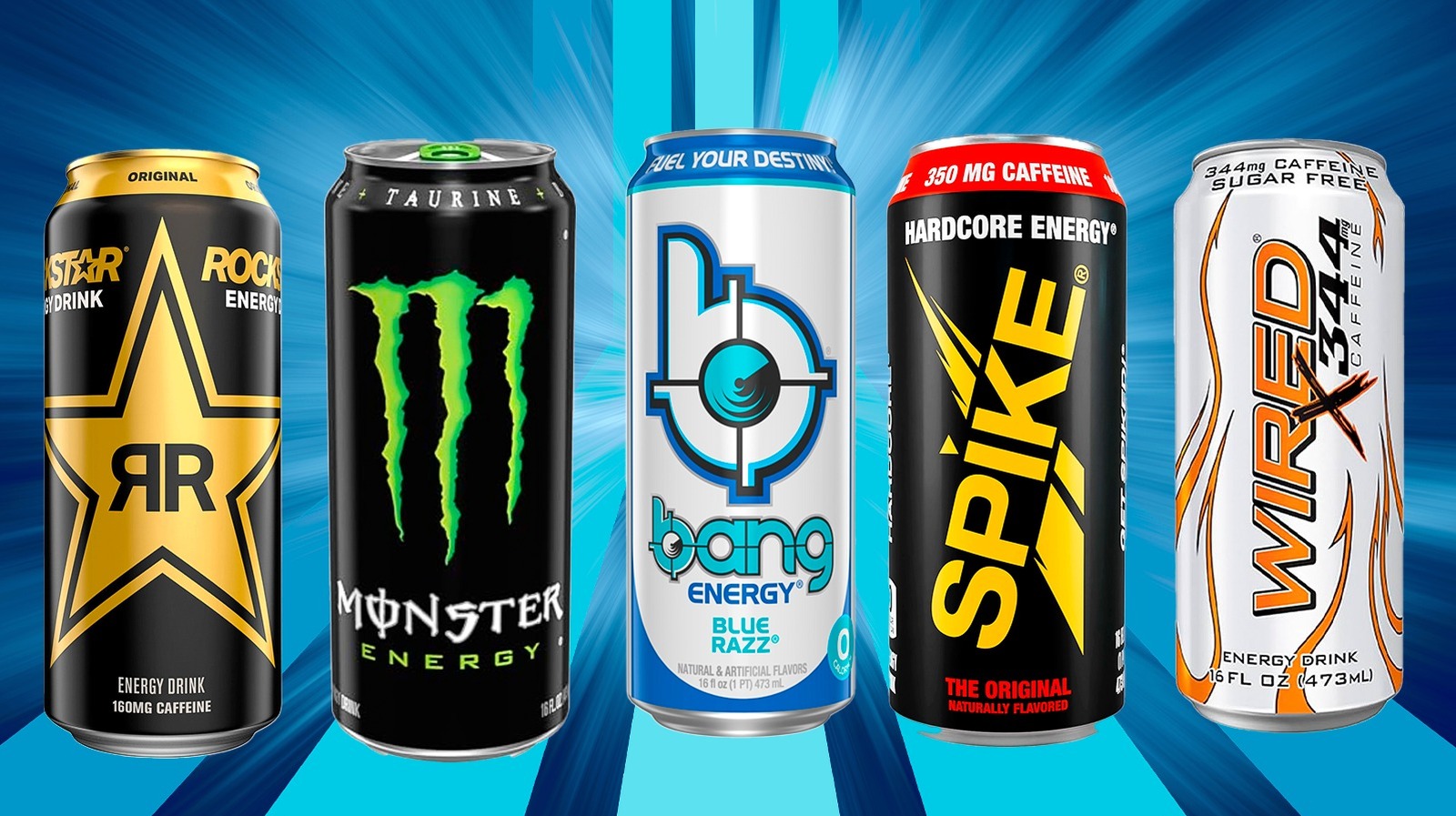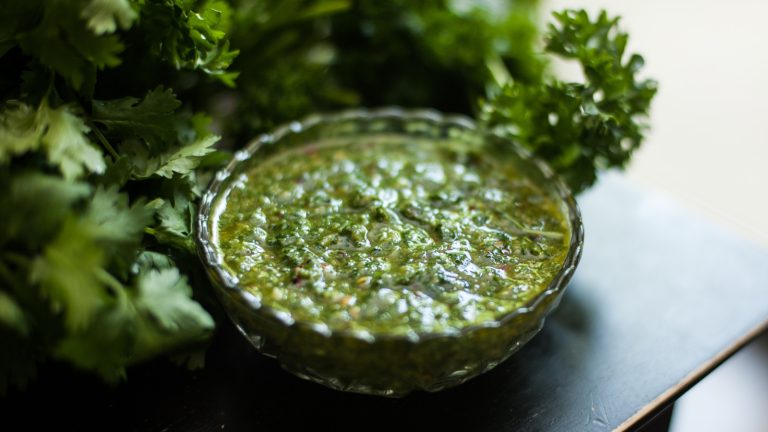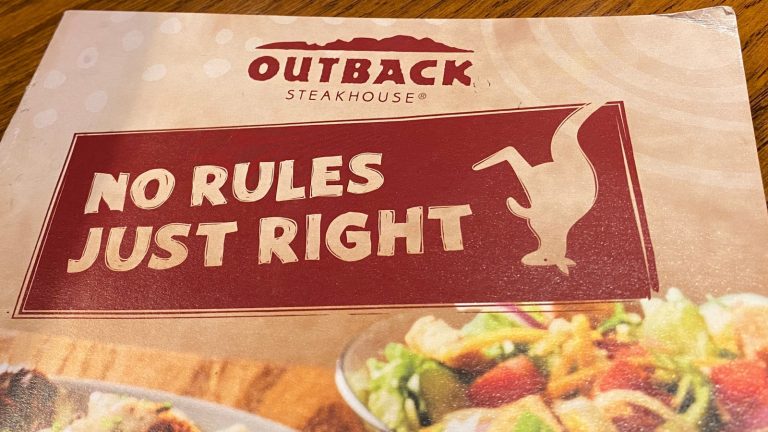We may receive a commission on purchases made from links.
Long before energy drinks existed, ancient civilizations consumed cacao as an early energy booster. And honestly, they were better off for it. It was all-natural, with no additives and no sugar overload. But then came the lab-made stuff. In 1962, Japan introduced Lipovitan D — a small tonic with taurine, B vitamins, and caffeine, designed to keep tired workers awake during long shifts. This formula later inspired the creation of Red Bull, which entered the U.S. market in 1997. And just like that, energy drinks were everywhere.
They promise wings, focus, and an energy boost that lasts for hours — but do you really know what you’re sipping when you crack open your go-to energy drink? In this article, we break down 12 of the unhealthiest energy drinks you’ll want to avoid and why. We analyzed ingredients, sugar levels, caffeine content, and other major health red flags.
Wired
If Wired energy drinks give you the shakes, there’s a reason. They are among the most caffeinated beverages ever marketed, posing serious health risks, especially with regular or excessive use. The most extreme of the lineup, Wired X505 (now discontinued), packed a staggering 505 milligrams of caffeine in a 23.5-ounce can alongside 4,400 milligrams of taurine, 365 milligrams of guarana, 145 milligrams of inositol, and high doses of B vitamins, including 730% of the recommended daily intake (RDI) of vitamin B12. Wired X-B12 Rush contains far less caffeine (95 milligrams per 16-ounce can) but overloads the body with 180 micrograms of vitamin B12 (7,490% RDI) and 10 milligrams of vitamin B6 (580% RDI).
Your body usually gets rid of extra B12 since it’s water-soluble, but regularly taking way more than you need doesn’t give you more energy unless you’re actually low on B12. Doctors warn against taking super-high doses unless you have a deficiency. The Wired X-344 line — including Original, Sugar-Free, Berry Rush, and Strawberry Lemonade flavors — delivers 344 milligrams of caffeine per 16-ounce can. These also may include taurine (up to 2,900 milligrams), guarana seed extract (up to 250 milligrams), and white tea extract, with vitamin B12 doses as high as 180 micrograms. Even the sugar-free variant, while eliminating sugar, keeps the same stimulant load. The combination of excessive caffeine, high sugar content, and secondary stimulants makes Wired a risky pick. It can increase anxiety, insomnia, and heart palpitations, contributing to long-term health issues.
Spike Hardcore Energy
Next up on our list is Spike Hardcore Energy. Each 16-fluid-ounce can packs around 350 milligrams of caffeine. That’s already brushing up very close against the FDA’s recommended daily limit for adults in just one can. Risks include jitters, anxiety, insomnia, and even a racing heartbeat.
Spike’s cans may brag about having zero grams of sugar but don’t be fooled. The company uses sucralose, an artificial sweetener that’s been linked to gut health issues and potential long-term concerns. And while the original can’s label shows 10 calories, zero grams of fat, zero carbs, and 150 milligrams of sodium, the red flags are in the extra stimulants. The drink throws in beta-alanine and N-acetyl-L-tyrosine, which can cause that weird tingling feeling (called paresthesia) as well as headaches and digestive issues. On top of all that, it also provides 1000 micrograms of Vitamin B12 or 41,670% of the daily value.
The bottom line? Between the sky-high caffeine, artificial sweeteners, and added stimulants, Spike Hardcore Energy is a particularly unhealthy energy drink choice. Better to skip it and find healthier energy drinks to recharge.
Bang Energy
Bang Energy drink is marketed as a high-performance energy beverage, but its contents and effects raise significant health concerns. Available in over 25 variants, including all-new Any Means Orange, Blue Razz, and Nectarine Blueberry, each 16-ounce can contains 300 milligrams of caffeine. Too much caffeine can make you lose calcium through urine. If you don’t replace it, your bones may get weaker over time. It can also lead to adverse effects such as arrhythmias, anxiety and jitteriness, hypertension, trouble breathing, and seizures. The beverage is sweetened with sucralose and acesulfame potassium, which may disrupt gut health and contribute to metabolic issues. Artificial sweeteners have also been linked to an increased risk of cancer.
Bang Energy provides 40 milligrams of sodium and 85 to 110 milligrams of potassium. Various flavors contain 27 milligrams of vitamin C (30% DV), 5 milligrams of niacin (B3) (30% DV), 0.5 milligrams of vitamin B6 (30% DV), and 1.5 micrograms of vitamin B12 (60% DV). Newer variants exceed these amounts, offering up to 90 milligrams of sodium and 100% of the Daily Value for select vitamins. Excessive intake of these, especially niacin, can cause side effects like flushing, loose stool, and liver strain. It additionally contains a proprietary creatyl-l-leucine blend (formerly marketed as “Super Creatine”) which is poorly absorbed by the body. The drink contains essential amino acids (BCAAs) as well, and excessive intake of these may strain kidney function.
5-hour Energy
At first glance, 5-hour Energy drinks seem harmless, even healthy. Zero sugar, zero calories, minimal sodium (10 milligrams), and packed with vitamins? Sounds more like a wellness drink, right? Well, not quite. Each 16-ounce can, be it Berry Punch, Grape, OrangeSicle, Pineapple Splash, Watermelon Crush, Tropical Burst, Rainbow Sherbet, or Raspberry Razz, contains 230 milligrams of caffeine. This can spike your heart rate, raise blood pressure, and leave you feeling jittery or anxious 30 to 60 minutes post-consumption. The overdose of B vitamins also shouldn’t be ignored. You’re getting 40 milligrams of niacin (250% DV), 40 milligrams of vitamin B6 (2,353% DV), and 500 micrograms of B12 (over 20,000% DV). In the long term, an excess of B vitamins can cause nerve issues, skin reactions, and metabolic imbalances.
The drink’s “energy blend” is also concerning: 2,000 milligrams of stuff like taurine, glucuronic acid, malic acid, L-phenylalanine, N-acetyl L-tyrosine, and citicoline. Taurine and N-acetyl L-tyrosine may overstimulate the nervous system, worsening anxiety or causing headaches. And if you have phenylketonuria (PKU), that phenylalanine can be dangerous, even causing brain damage.
Even the acidity of ingredients like malic acid puts your teeth at risk by slowly eroding enamel. Then there’s sucralose, raising concerns about gut microbiome disruption and insulin sensitivity, alongside harmful artificial flavors and preservatives such as potassium sorbate.
Ghost Energy
Ghost Energy Drinks taste like your favorite childhood candy. They pack 200 milligrams of caffeine per can, have zero sugar, and come in bold flavors like ‘Merica Pop, Bubblicious Cotton Candy, Welch’s Grape, and the OG. But behind the colorful cans and nostalgic flavors is a mix that’s not as harmless as it seems. Its caffeine boost is strong enough to cause anxiety, insomnia, or dysrhythmia — especially if you have more than one can or already consume caffeine from other sources. The zero-sugar promise comes with a trade-off: alternative sweeteners that are artificial, so while you’re skipping calories, your digestive system might be paying the price. Sour variants of the drink contain malic, tartaric, and citric acids, a finding supported by a study showing energy drinks harm enamel.
Then there’s the mix of cognitive-enhancing ingredients. Each can has 1,000 milligrams of L-Carnitine L-Tartrate, which may cause nausea, stomach cramps, heartburn, or a fishy body odor. There’s also 1,000 milligrams of taurine — generally safe, but it can lead to stomach pain, vomiting, or headaches. The 150 milligrams of Alpha-GPC might help with focus but has been linked in some studies to possible higher stroke and heart risks as well as atherosclerosis. NeuroFactor (100 milligrams) seems safe, though long-term effects are unknown.
Monster Energy
Monster Energy might be everywhere, but that doesn’t mean it’s a smart pick. The standard 16-ounce original variant delivers 230 calories, 58 grams of total carbohydrates, 370 milligrams of sodium, 160 milligrams of caffeine, and an alarming 54 grams of added sugar. This far exceeds the American Heart Association’s recommended daily sugar intake (36 grams for men, 25 grams for women). While it contains 0 grams of fat, it is artificially fortified with enormous doses of B vitamins (some at 500% of the daily value). Chronic overconsumption of these vitamins has been linked to nerve damage and other health issues.
The ingredient list is a cocktail of stimulants and additives: citric acid, natural flavors, taurine, sodium citrate, color added, Panax ginseng extract, L-carnitine L-tartrate, sorbic acid, benzoic acid, niacinamide, sucralose, D-glucuronolactone, inositol, guarana extract, pyridoxine hydrochloride, maltodextrin, and cyanocobalamin. Combined with high caffeine and sugar, some of these ingredients can cause neurotoxic effects, raise blood pressure, and increase the risk of heart palpitations, anxiety, and insomnia. Let’s not forget the acids and sugars that eat away at your teeth and accelerate decay.
Think sugar-free is safer? Monster Zero Sugar and Ultra series skip the sugar but still deliver around 150 milligrams of caffeine and include artificial sweeteners. Java Monster? Those cans deliver up to 300 milligrams of caffeine — ¾ of your full daily limit in one go.
Zoa
ZOA Zero Sugar Energy Drink might seem like a health-conscious choice at first glance—co-founded by Dwayne “The Rock” Johnson and promoted with the upbeat tagline “better-for-you.” It comes in flashy flavors like Wild Orange, Super Berry, White Peach, Frosted Grape, Tropical Punch, Pineapple Coconut, Lemon Lime, Cherry Limeade, Original, Green Apple, and Strawberry Watermelon. But behind the celebrity endorsement and sleek branding lies a product that raises serious health concerns. Each 12-ounce can packs 160 milligrams of caffeine. Combined with other stimulants in the drink, this poses risks like tachycardia, anxiety, insomnia, arrhythmia, and stroke, especially for those sensitive to stimulants or consuming additional sources of caffeine.
It’s also loaded with artificial sweeteners like sucralose and acesulfame potassium, which have been linked to gut imbalance, sugar cravings, and even potential cardiovascular risks. And while ZOA throws in a cocktail of vitamins and amino acids, the amounts are questionable: one can gives you 130% of your daily recommended Vitamin C dose and 100% or more of several other B vitamins, levels that could cause harm over time such as nerve damage. Camu Camu — an ingredient in ZOA — lacks sufficient research to confirm its safety or effectiveness. Acerola, another ZOA ingredient, has been associated with a higher chance of developing kidney stones, stomach cramps, diarrhea, and drug interactions. Also present are green coffee and green tea extracts, which have even been linked to cases of liver toxicity, bleeding disorders, glaucoma, IBS, and anxiety.
Rockstar
Rockstar Energy Drinks come in several main product lines, such as Original, Pure Zero, and Punched. The 12-ounce can packs 160 calories and the equivalent of ten teaspoons of sugar. This overload spikes your blood sugar, stresses your pancreas, and sets you up for crashes, cravings, and long-term risks like diabetes and obesity. Even the “healthier” sugar-free options aren’t safe — they use sucralose and acesulfame potassium, which may cause gastrointestinal issues and impair metabolism.
Looking at caffeine, Rockstar contains 160–240 milligrams per can. While caffeine can temporarily boost alertness, in high amounts, it can cause shaking, nausea, insomnia, heart palpitations, restlessness, and, in rare cases, liver damage, especially when mixed with other stimulants. And Rockstar is full of those, too: Guarana, taurine, Panax ginseng, and glucuronolactone all team up to amplify cardiovascular and neurological stress.
To top it off, each can delivers mega doses of B vitamins (up to 100% of your daily value), which sounds healthy until you remember the aforementioned potential side effects of consuming too much vitamin B. Additionally, studies show that just one can of Rockstar can raise your blood pressure and stress hormones within 30 minutes.
Venom Death Adder
Venom Death Adder isn’t just aggressive in branding; what’s inside the can is much more alarming. This energy drink comes in several flavors, but Fruit Punch, Venom Original, and Black Cherry Kiwi are arguably the most dangerous. Each 16-ounce can delivers 160 calories, 300 milligrams of sodium, and 40 grams of sugar per 16-ounce can. The sugar load alone can trigger blood sugar spikes, crashes, weight gain, and an increased risk of gout when consumed regularly. These cans also provide about 100% of the Daily Value for vitamins B2, B3, B6, and B12 but contain 0 grams of fat and protein. Plus, each can delivers 160 milligrams of caffeine. Such a dose in one serving may cause jitteriness, anxiety, and difficulty sleeping if over-consumed.
The zero-sugar options — Citrus, Strawberry Apple, Watermelon Lime, and Original — have fewer calories (10-15 per can) but they also contain high sodium levels ranging from 270 to 310 milligrams from just one can, and most people are already getting sodium from other foods and drinks throughout the day. This increases the risks of kidney injury, Meniere’s disease, gastric cancer, obesity, osteoporosis, and cardiovascular diseases. Other ingredients in Venom Death Adder include carbonated water, corn syrup, taurine, inositol, natural flavors, ginseng extract, guarana extract, and riboflavin (stimulants & artificial additives).
Full Throttle
With a name like Full Throttle, it’s no surprise that this energy drink hits hard, not just with caffeine but with a sugar and sodium surge that can throw your system into overdrive. Full Throttle is a high-octane energy drink known for its bold flavors and potent energy boost. A 16-ounce can packs 160 milligrams of caffeine, aligning with many other energy drinks on the market. However, it’s the sugar content that raises the biggest concern. With 55 grams of sugar per can, it surpasses the American Heart Association’s recommended daily limit for added sugars.
The drink’s 230 calories come almost entirely from carbohydrates, primarily sugars, offering little in terms of nutritional value. While it includes B vitamins like niacin (B3), pantothenic acid (B5), pyridoxine (B6), and cyanocobalamin (B12), these are commonly found in various foods and supplements. The presence of high fructose corn syrup, artificial colors in the True Blue flavor (Blue 1, Red 40), and sodium benzoate as a preservative further add to the health concerns as they have been linked to weight gain, exacerbated ADHD symptoms, and cancer risks.
NOS Energy
NOS Energy boasts high-octane flair, but what’s inside the can isn’t very assuring. Each 16-ounce serving of NOS Original contains 210 calories, 51 grams of sugar, and a hefty 410 milligrams of sodium. That sugar load alone is equivalent to about 12 teaspoons, and the sodium content takes a substantial bite out of the daily limit, making this drink a risky regular habit.
The caffeine content sits at 160 milligrams, which may not top the charts, but it’s still potent, especially when combined with other stimulants like guarana extract and taurine. Both of these can amplify the effects of caffeine and lead to side effects such as anxiety, stomach irritation, liver disease, kidney injury, or cardiovascular issues. The ingredients list reads: high fructose corn syrup, citric acid, sodium hexametaphosphate, inositol, gum arabic, ester gum, and three preservatives (potassium sorbate, calcium disodium EDTA, and sodium hexametaphosphate) alongside artificial colors like Yellow 5 and Yellow 6.
Red Bull
Red Bull may be the most iconic energy drink on the planet, but its popularity doesn’t exempt it from health concerns. A standard 8.4-ounce can contains about 80 milligrams of caffeine, 110 calories, and 26 grams of sugar. A 12-ounce can has 160 calories, 38 grams of sugar, and about 114 milligrams of caffeine, a moderate dose but one that can still cause jitters or sleep disruption in sensitive individuals. Larger sizes pack even more: A 20-ounce can contains up to 198 milligrams of caffeine.
The ingredient list includes carbonated water, sucrose, glucose, citric acid, taurine, sodium bicarbonate, magnesium carbonate, caffeine, niacinamide (vitamin B3), pantothenic acid (B5), pyridoxine (B6), and cyanocobalamin (B12). While B vitamins support energy metabolism, high doses in liquid form can overwhelm the body when consumed daily. As discussed earlier, excessive and long-term vitamin B6 intake has been linked to nerve damage and neurological issues.
One of Red Bull’s biggest health risk stems from its 27-gram to 63-gram sugar content. Regular intake may lead to weight gain, diabetes, increased cardiovascular risk, and kidney disease. Even the sugar-free version contains artificial sweeteners like acesulfame K and sucralose, which have their own health debates.





